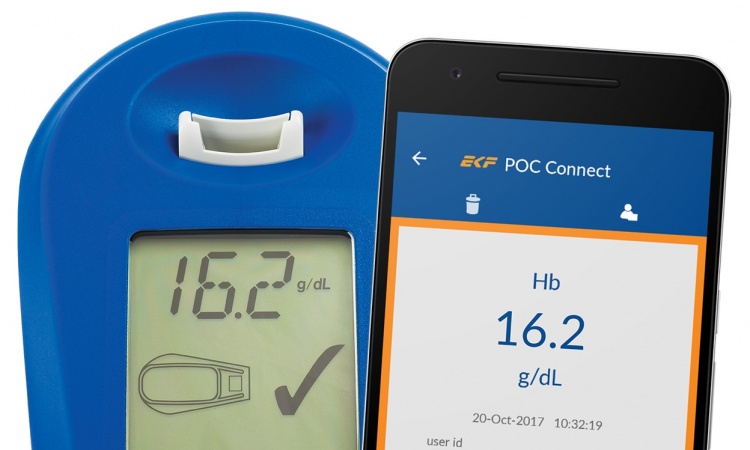Article • A very special juice
The patient blood management concept
'Blood is a very special juice’ – something even Goethe’s Mephistopheles knew. Medics have also known this for centuries, so it’s nothing new that the ‘juice’ and its properties receive a lot of attention in medicine. However, what is new is that dealing with the use of blood through patient blood management (PBM) is coming to the fore.
Report: Anja Behringer
PBM was developed with the help of data from the first Austrian benchmark study in partnership with international experts. The concept is now implemented in Western Australia and a number of American and European centres and was included in the WHO agenda and on the homepage of the American Association of Blood Banks (AABB) in 2010 as an important principle for the improvement of transfusion safety.
Many POCTs can add up to a lot of blood taken

Unlike the EU-initiated Optimal Blood Use Project (EUOBUP), which aims to supply the right blood product to the right patient at the right time, PBM goes further – pursuing a preventive and corrective impact on those risk factors that usually lead to the need for transfusions. As Gudrun Hintereder MD, head of the central laboratory at the Wolfgang Goethe University Hospital in Frankfurt am Main, pointed out, PBM has been implemented in the USA for 20 years, but was only introduced in Germany in 2013.
The central laboratory provides significant support for this project to improve patient safety. Many point of care tests (POCT), plus routine and emergency laboratory examinations are carried out during a hospital stay, which, cumulatively, amount to a lot of blood. The frequency and amount of blood needed contribute significantly to the intensification or development of anaemia, an independent risk factor for increased rates of complications. Treatment of anaemia is often carried out with the help of banked blood transfusions; an expensive medical measure that can also cause numerous side effects. The PBM programme at the Frankfurt University Hospital, a clinical, interdisciplinary project to improve care and safety, aims to preserve and enhance patients’ own resources, and to reduce and prevent acquired and diagnostically induced anaemia and the adequate use of blood products.
Blood-saving measures
To ensure consistent process optimisation in the laboratory, the necessary minimum quantities required, whilst maintaining constant diagnostic quality are analysed. The volumes of existing blood collection tubes are reduced step by step. ‘We also reduce the frequency blood is collected, although this means the patient must be well prepared for surgery, and we continuously check for possible anaemia. We have seen that we can make do with less, which has enabled us to save many litres of patient blood,’ Hintereder explains. The concept also includes blood-saving surgery. Perioperatively, as much blood as possible is collected and administered to the patient via cell-saver systems, which means that the use of banked blood products can be reduced. For some patients, a blood transfusion is the equivalent of organ transplantation, with all the associated risks such as infection or tolerance of the banked blood.
Anaemia diagnostics, smaller blood collection tubes, own-blood transfusion in the operating theatre – these are only three of more than 100 individual measures of patient blood management used by Frankfurt University Hospital, an international trailblazer in this field. Blood products also have a financial aspect. Since the willingness of the general population to donate blood has dropped, banked blood has become scarce and expensive. In Frankfurt, PBM has helped to save a tenth of the previous costs spent on blood products, which run into millions.

PBM results in lower morbidity and fewer strokes
The advantages for patients are even more significant. According to a German study, the number of patients with acute kidney failure has dropped considerably. In Western Australia, doctors in four large hospitals saw a lower morbidity rate and fewer strokes and heart attacks since PBM introduction. All these advantages result from the consistent cooperation between clinicians and the central laboratory. Hintereder has observes that manufacturers are not geared up for blood management. ‘Saving is not something the POCT equipment is set up for.’ Therefore her appeal to the industry is: ‘Make sure that you use less blood for analysis.’
Profile:
Gudrun Hintereder MD MBA has been head of the central laboratory at the Johann Wolfgang Goethe University Hospital in Frankfurt am Main since 2002 and is responsible for point of care test (POCT) analysis for the entire hospital. In 2010, she became an international assessor of the OLAS/ILNAS (Luxembourg) and the ILNAB (Ireland) for the accreditation of medical laboratories. Hintereder has worked on POCT and patient blood management since 2013.
14.06.2017











